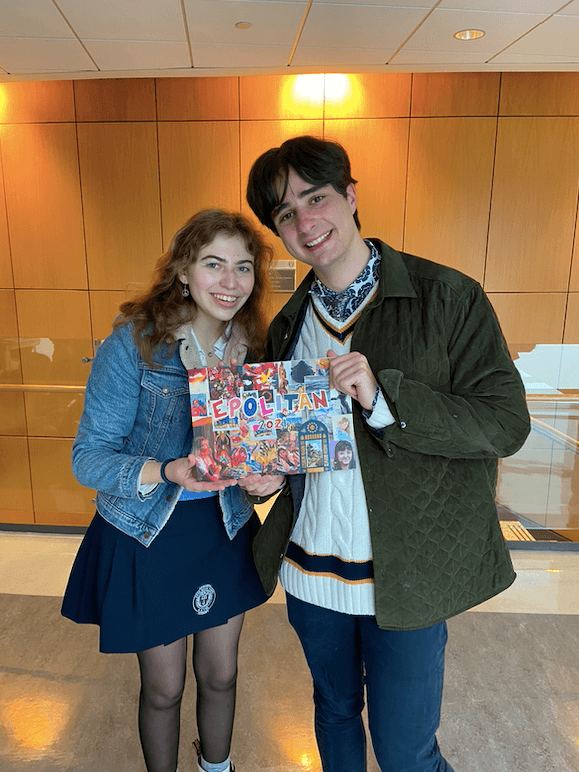Hailey Deng ‘25
Epolitan, a student-curated literary and arts magazine published every spring, showcases the artistic works of EA students, and has recently wrapped up the process of collecting student submissions.

Photo courtesy of Gianna Trala ’23
Anna Safford, US English Teacher and Epolitan Faculty Advisor, reaches out to her students to encourage them to share their work. She teaches IV and V form, noting that through them she has “received some amazingly creative and wonderful short stories and poems from that particular assignment. I think if you’ve done creative work in your classes, this can be a great place to showcase that.” The Head of the Art Department, and the other faculty advisor of this magazine, David Sigel, advises his students to submit their work as well, and many other teachers do the same. The club presidents are William Sargent ‘22 and Carolina Madeira ‘22.
Common visual art submissions in Epolitan include photography and 2-D or 3-D art, such as paintings, woodworking, ceramics, and sculptures. Literary pieces are also seen throughout the magazine, varying from poetry to short stories. Students are not just limited to these categories, though. Sargent states that “it’s really mostly up to the person submitting what they want to submit, and we’ll make it work.”
Although sharing one’s work can seem like a daunting task, there is another option for people who want to submit while keeping their privacy. “We get alot of anonymous writing submissions,” Safford notes, “You want it to be out there, but maybe you don’t want people to know that it was you that did it.”
The works showcased in Epolitan are not just from students, either, says Sargent. “In last year’s publication, we highlighted some teachers’ artwork as well, which is definitely something you don’t get to see often. It’s a really great way for students to get to know their teachers better and for teachers to have an outlet to show their work.” Madeira adds, “It’s really nice being able to have students and teachers on the same playing field – everyone’s art is treated the same in this publication. It’s just an appreciation for all art.” The layout of Epolitan further emphasizes this idea, as different mediums of work with similar themes are often formatted together.
Aside from submitting work, involvement in Epolitan can also be through actually joining the club. Sargent explains, “Based on who’s interested from the club fair, we’ll select certain editors for certain sections. People who are not official editors can still collaborate, but we try to have main editors so we can keep deadlines happening and keep people accountable.” Editors are responsible for encouraging their peers to submit work, and to design and layout the publication.
Madeira compares her experience as an editor to designing sets for the Theater Department, stating, “The set is the background for the acting, like this is the background for art or writing. Just creating something that compliments another medium- even though this is just a magazine, there’s so many similarities between it. It’s not really an incredibly appreciated job to create the thing that compliments the main idea but it’s so important, and people don’t really think about it that much.”
Copies of last year’s Epolitan can still be found in the Campus Center, and this year’s edition will be distributed at Artsfest. Sargent expresses his gratitude towards Epolitan, stating that “It’s a really rewarding club and publication, because a lot of people are not very confident in their work. They’ll say ‘Oh, well I don’t want to submit it because it’s not very good’ and you get to show them that no, your work is good, and it deserves to be seen!”